WOLVES
Wolves are recognized as highly social and intelligent creatures. They are cousins to dogs, as they share the same ancestry. Both belong to the family Canidae and are referred to as canids. ‘Canid’ primarily means ‘dog,’ so the family is also known as the dog family.
Scientific Classification of Wolves
Kingdom | Animalia |
Phylum | Chordata |
Class | Mammalia |
Order | Carnivora |
Family | Canidae |
Genus | Canis |
Types of wolves
There are only 3 species of wolves in the world. However, 40 subspecies exist in these species.
- The Gray wolf (Canis lupus) is the largest and best-known species of wolf in the world. Out of 40, 30 subspecies are close to the gray wolf.
- The Red wolf (Canis rufus) is the rarest species found only in the United States.
- The Eastern wolf (Canis lycaon): In the early 21st century, it was considered as a distinct species of wolf, but now molecular evidence supports that it is a hybrid of gray wolf and coyotes.
Physical Characteristics
Size and Weight: Wolves measure 41 to 63 inches from head to tail and stand 31 to 43 inches tall at the shoulder. On average, they weigh between 36 and 40 kg, although weights above or below this range also occur. Females typically weigh about 4 kg less than males.
Teeth and Jaw Structure: Wolves have 42 teeth, including four canines used to grip prey. They possess powerful jaws capable of exerting strong crushing pressure on the bones of their prey.
Body Build and Fur Coloration: Wolves are characterized by alert ears, expressive faces, long legs, and bushy tails. They sport dense winter fur, with shorter hairs on their limbs and longer guard hairs on their backs. The fur color can vary from white to brown and black.
Color Variations: The body and fur color can differ among species or subspecies, ranging from white to brown, red, black, and gray.
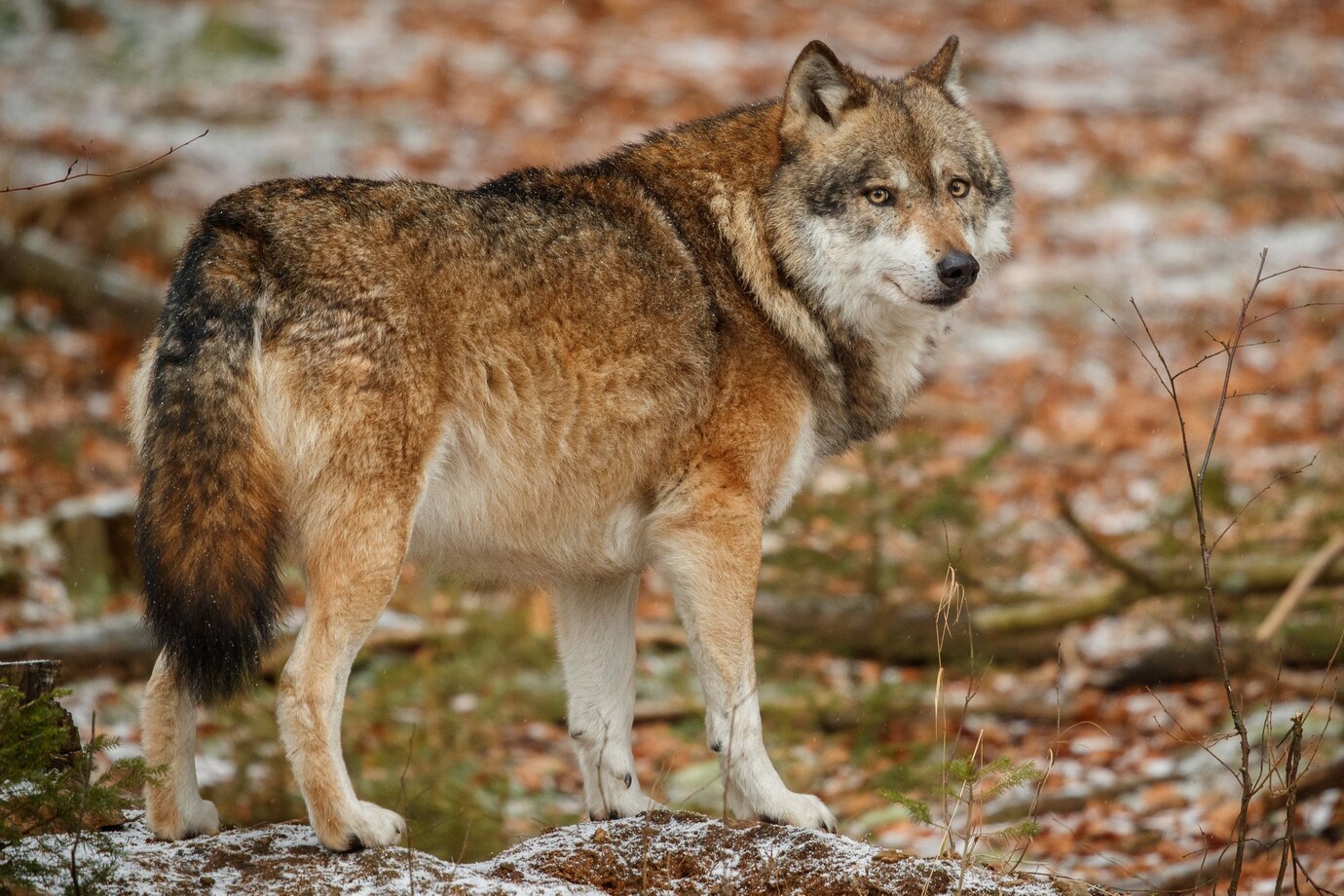
Rabbit Height
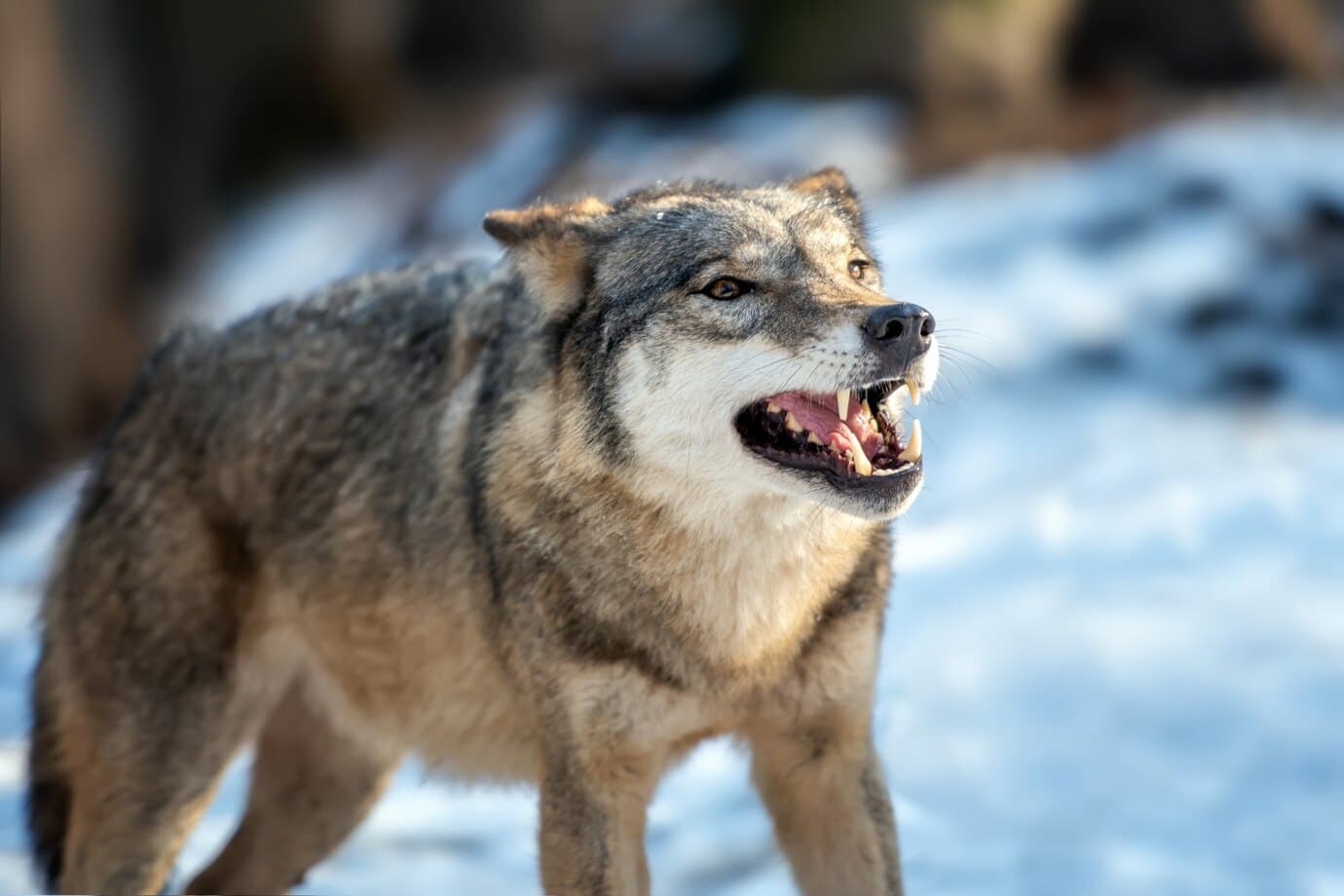
Teeth and jaw structure

Body build and fur coloration
Distribution and Habitat
Geographically, wolves range across the Northern Hemisphere. They are found mainly in North America, Eurasia, and North Africa. Wolves tend to live in a variety of habitats including forests, shrublands, wetlands, deserts, and prairies. Their habitat selection depends on the abundance of prey, snow conditions, and the densities of livestock and humans.
Historically, wolves were found in nearly every habitat with sufficient prey, from North America to Mexico and the polar ice caps. However, they are now mostly found in remote wilderness areas. Their population has been reduced to one-third of its historic range. They are locally extinct in the United States, Mexico, Japan, and the British Isles.
Behavior and Social Structure
Pack Dynamics and Social Hierarchy
A Wolf Pack is a family group typically consisting of an adult breeding pair and their offspring, usually numbering between 6 and 10 wolves. Wolves are social creatures that establish a dominance hierarchy. The Alpha male is the leader of the pack, and the Beta female partners with him in hunting and other group activities. Luna, the single mate of the Alpha, is responsible for rearing their young.
Communication Methods (Howling, Scent Marking, Body Language)
Wolves use various communication methods. They howl to assemble the pack before and after hunts, to communicate across large distances when crossing unfamiliar territory, and to signal potential threats. Additionally, they growl, bark, and whine. Scent marking, which is more effective than howling, is used to define and advertise territories.

Reproduction and Lifespan
Wolves are monogamous. A pair breeds once per year in late winter. During pregnancy, the female resides far from its territory for defense purposes. The gestation period lasts about 63 to 75 days. Luna gives birth to 1 to 12 pups per litter. Pups are deaf and blind at birth, with little fur covering their bodies. Mother wolves create dens for the pups, and adult wolves in the pack take care of their food. After three to four weeks, pups are able to walk, play, and feed on flesh.
Two years after birth, a wolf becomes young and mature, reaching sexual maturity at 3 years of age. Adult wolves are four to five years old. At 2 years of age, a young wolf disperses from the pack, finds a mate, and forms its own pack. The annual survival rate is 60 to 80%. In the wild, a wolf may live up to 13 years, while in captivity, this can extend to 16 years.
Role in the Ecosystem
Role in the food chain
Wolves are “keynote species” of Nature as their abundance has had a great impact on the ecosystem. For example, grazing deer are being hunted by wolves. It may affect the vegetation by changing the dynamics of other species in the ecosystem.
Interaction with other species
In North America, wolves share their habitats with other species like bears, cougars, and coyotes. They have competition for food, and most wolves take advantage of their packs. They show symbiosis as ravens direct their food possibility, and in return, ravens eat the scraps of their hunted food.
Diet and hunting
Primary Prey and Alternative Food Sources
Wolves are predators belonging to the order Carnivora. Carnivores are animals that feed on the flesh and bones of their prey. Gray wolves primarily hunt ungulates such as deer, elk, caribou, oxen, and bison. Their diet also includes smaller prey like moose, hares, and other mammals. Red wolves primarily prey on smaller animals like beavers, rabbits, and hares, but they also consume fruits as an alternative food source.
Feeding Habits and Digestion
When wolves catch prey, they bite, overpower, and immobilize it to start feeding. They typically consume internal organs such as the heart, liver, stomach, lungs, kidneys, and spleen, in addition to muscles. An adult wolf can eat up to 9 kg (about 20 lbs) of meat per meal.
Adaptations
Fur and Heat Conservation
Wolves have winter fur that consists of short undercoats and long guard hairs, which aid in heat conservation. Short hairs cover the limbs, while long hairs cover the back and chest. They reduce their blood flow in winter to conserve heat. They thrive in temperatures ranging from minus 50 to 48 degrees Celsius.
Physical Adaptations for Running and Camouflage
Nature has designed wolves for travel, making them digitigrade. They possess long legs, large feet, and a deep, narrow chest. As premier travelers, they can reach speeds of up to 40 miles per hour to capture prey. Their coloration varies depending on their habitat and blends with it, aiding in camouflage.
Predators and Threats
Natural Predators
Wolves are natural predators of mammals across both short and large ranges. They primarily prey on hoofed mammals such as deer, elk, bison, mountain goats, and caribou. Alternative prey includes beavers and snowshoe hares.
Human-Wolf Conflict
Wolves living near woodlands and livestock areas are becoming a threat to humans and their livestock. Humans hunt wolves for two reasons: obtaining fur and protecting livestock. This leads to human-wolf conflicts, causing the remaining wolves to migrate towards remote wilderness areas.

Conservation Status and Efforts
In North America, particularly in Canada and Alaska, 10% of the wolf population is harvested annually. Their population is declining, so the Canada National Parks Act provides them with protection in national parks. In Eurasia, the wolf species is protected under the Conservation of European Wildlife and Natural Habitats.
In South Asia, they are prominently found in the northern regions of Pakistan and Afghanistan. In India, they are widely distributed in some areas and protected under India’s wildlife law. Turkey has a population of 7,000 wolves. In the Middle East, wolves are endangered and receive protection from Oman and Israel.
Daily Life and Activities
Movement and Travel
A pack of wolves roams between 25 and 100 miles around its territory daily for defense purposes in the Great Lake areas. They also travel long distances for hunting, though not daily.
Hunting Strategies
Wolves may hunt alone or in a pack, but higher success rates are recorded for lone wolves and mated pairs. Observations indicate that single wolves occasionally prey on large animals such as moose and muskoxen. They are primarily nocturnal but sometimes hunt during the day. A pack of four is sufficient for hunting elk, while a larger sized pack is suitable for bison.
Wolves may benefit the herd by hunting their diseased animals, making the herd more genetically fit. The prey population may be reduced in severe winters due to extensive hunting; however, it becomes stable due to habitat alterations made by wolves for various reasons.
Feast or Famine Lifestyle
In severe winters, young and old prey animals are weak and cannot move far due to dense snow. For wolves, this is the best period for capturing and feasting as prey cannot even defend itself. Summer is a scarce period. During times of scarcity, they feed to the extent of scavenging from other adult wolves.
Territoriality and Conflicts
Territorial Boundaries
A wolf pack exhibits strong territorial behavior. The size of the territory depends on the availability of prey. With a low prey population, the territory size increases. They patrol approximately 10% of their territories daily and mark them with scent.
Conflict with Other Packs
Wolves avoid encroaching on the territory borders to prevent confrontations. Conflicts begin when a wolf from one pack enters the territory of another. The consequences of these conflicts can be severe, resulting in the death of wolves from the involved packs. According to a case study, between 14 to 65 percent of wolf deaths in Minnesota and Denali National Park are the result of these territorial conflicts.
Mortality and Lifespan
Causes of Death
Common causes of death in wolves include injuries, scarcity of food, sickness, predation by big cats, pathogens, and the most frequent factor, human impact.
Survival Rates
Pup survival depends on the availability of prey. In areas with a large prey population, there is a higher survival rate for pups. On average, there is an 18% mortality rate among adult wolves, which is higher in lone wolves than in those in packs.
Longevity of Alpha Wolves
Alpha wolves tend to live longer than other subordinates. If pups survive more than a year, only 1 or 2 out of ten will become an alpha male. Alpha males can live up to 8 years. Only a few grow old while others die without reproducing.
Comparison with Humans
Wolves are family-oriented creatures, much like humans. Alpha wolves are leaders who make decisions that others obey. They take proper care of their young, teaching them to play, fight, and be disciplined. They even mourn their dead.
Perception and Sensory Abilities
Wolves have a very strong sense of smell, more than 100,000 times greater than that of humans. They can detect scents from a mile away. Wolves are red color blind due to the absence of red color receptors, unlike humans. However, they can distinguish more shades of gray than humans can
Interesting Facts
- Wolves can travel up to 37 km per hour.
- Wolf pack attacks on a weak animal of a herd.
- They are highly intelligent and family oriented creatures.
- Wolves are true companions and will die for each other.
Cultural value
- In Japanese culture, wolves are regarded as messengers of god.
- In Turkish culture, wolves are regarded as highly intelligent, sovereign, and brave creatures.
- Chinese culture portrays wolves as a symbol of cruelty.
- In a Hollywood film, Never Cry Wolf is scripted, which shows the positive aspect towards wolves.
Do you know what Turkey’s national animal is?
FAQs- Frequently Asked Questions
Q- What do wolves eat?
Wolves primarily feed on hoofed mammals like deer, elk, moose, caribou, bison, and oxen, while alternate are beavers and hares.
Q- How do wolves communicate?
Wolves can communicate by different methods such as howling, barking and growling, as well as scent marking and body language.
Q- Are wolves dangerous to humans?
Not really, they just avoid contact with humans, but sometimes, when they become aggressive or habitual to humans, they are dangerous.
Q- How can we help in wolf conservation?
We can help in wolf conservation by educating ourselves, preserving their habitats by reforestation, managing the invasion of other species, and supporting wildlife organizations.
Learn More About Wolves
On this page, you are invited to browse our articles about some of the fascinating ways that wolves behave.
These articles answer common questions about wolves, including what they eat, when they’re most active, their reproductive cycle and process, and the ways wolves interact with humans and their environment.
Scroll down to learn more about some of the unique things that wolves do, and discover why they act the way they do
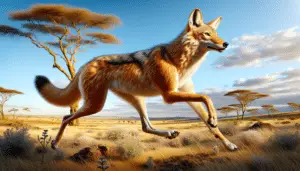
African Golden Wolf (Canis anthus)
Introduction to the African Golden Wolf The African Golden Wolf (Canis anthus) is a fascinating species with a rich history
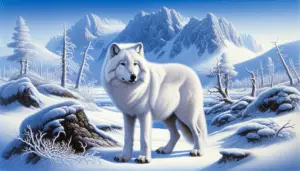
Arctic Wolf (Canis lupus arctos)
Introduction to the Arctic Wolf The Arctic Wolf (Canis lupus arctos) is a captivating creature that has captured the interest

Are Wolves Endangered?
Introduction to the Endangered Status of Wolves Wolves have long captivated the imaginations of people worldwide with their majestic, elusive
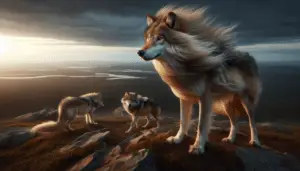
Average Wolf Lifespan in the Wild
Introduction to Wolf Lifespan in the Wild The average lifespan of a wolf in the wild is about six to
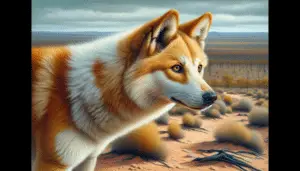
Dingo (Canis lupus dingo)
Introduction to Dingoes The dingo, scientifically known as Canis lupus dingo, is a fascinating wild canine indigenous to Australia. They
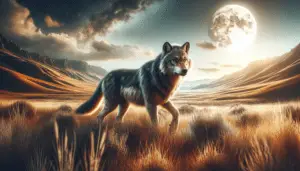
Dire Wolf (Canis dirus)
Introduction The dire wolf (Canis dirus) is one of the most iconic prehistoric predators, popularized by numerous books and TV

Do Wolves Eat Deer?
Humans are actually the #1 predator of deer on the planet, but we’re just one of the many animals that
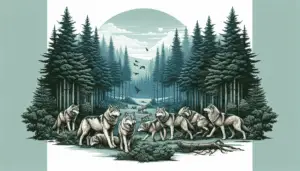
Do Wolves Make Good Pets?
Can Wolves Be Domestic Pets? The simple answer is no, wolves are not suitable as pets. While it might be
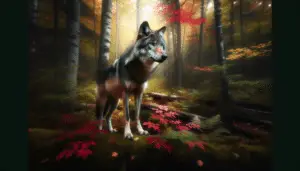
Eastern Wolf (Canis lupus lycaon)
The Eastern Wolf: An Overview The Eastern Wolf, also known scientifically as Canis lupus lycaon, is a fascinating and integral

Ethiopian Wolf (Canis simensis)
Introduction to the Ethiopian Wolf Often dubbed the world’s rarest canid, the Ethiopian Wolf (Canis simensis) is a fascinating creature
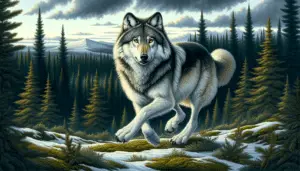
Eurasian Wolf (Canis lupus lupus)
Introduction to the Eurasian Wolf The Eurasian Wolf, scientifically known as Canis lupus lupus, is one of the most widely

European Rabbit
Introduction to the European Rabbit The European rabbit, known scientifically as Oryctolagus cuniculus, is a widespread mammal that significantly impacts

Gray Wolf (Canis lupus)
Introduction to the Gray Wolf (Canis lupus) The gray wolf, also known as Canis lupus, is a well-known predator and
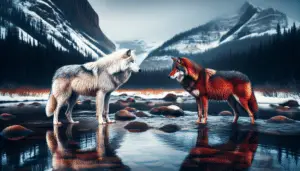
Gray Wolves vs. Red Wolves
Introduction to Gray Wolves and Red Wolves Gray wolves and red wolves are two distinct species known for their remarkable
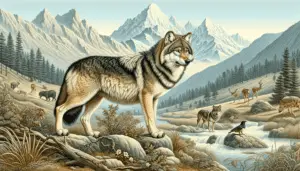
Himalayan Wolf (Canis lupus chanco)
Introduction to the Himalayan Wolf The *Himalayan Wolf* (*Canis lupus chanco*) is among the most intriguing predators found in the
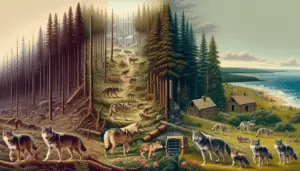
History of Wolves in North America
Origins and Early History Wolves, scientifically known as Canis lupus, are one of the most widely distributed land mammals. They
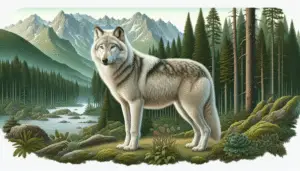
Honshu Wolf (Canis lupus hodophilax)
Introduction to the Honshu Wolf The Honshu Wolf, also known as Canis lupus hodophilax, was once native to the islands

How and Where to Hunt Wolves
Introduction to Wolf Hunting Hunting wolves can be a thrilling and challenging endeavor. The answer to how and where to
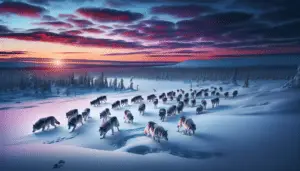
How Are Wolves Adapted to Their Environment?
Introduction to Wolf Adaptations Wolves are remarkable creatures known for their adaptability and survival skills in various environments. Adaptations in
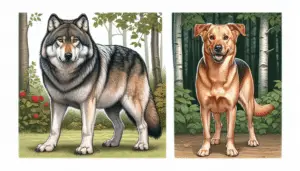
How Big Are Wolves Compared to Dogs?
How Big Are Wolves Compared to Dogs? When we talk about the size of wolves compared to dogs, the differences

How Big Are Wolves Compared to Humans?
Introduction: How Big Are Wolves Compared to Humans? When you think of wolves, you might imagine a majestic and somewhat
